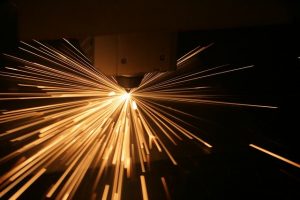
Joining and forming are two common types of manufacturing processes. Manufacturing companies often rely on one or both types of processes to convert raw materials into finished products. While joining and forming have a similar goal, however, they aren’t the same. There are stark differences between joining and forming manufacturing processes, which you can learn more about in the following post.
What Are Joining Processes?
Joining processes are characterized by their ability to fuse or “join” two or more components for the purpose of creating a different object, such as a ready-to-sell consumer product. Most materials can be joined — and there are typically multiple ways to join them. Two-by-fours, for instance, can be nailed or bolted together, whereas sheet metal can be welded or soldered together.
All joining processes involve joining two or more components, and most joining processes require the use of a separate tool or tools. With the help of a tool, such as a nailgun, the components are joined.
Common types of joining processes used in the manufacturing industry include the following:
- Welding
- Brazing
- Soldering
- Bonding
- Nailing
- Screwing
- Bolting
- Riveting
- Clinching
- Stapling
- Press fitting
What Are Forming Processes
Forming processes, on the other hand, involve the physical manipulation of an object. With forming, an object is physically deformed to achieve a different size and/or shape. When an object is exposed to physical stress, such as heat or pressure, it typically deforms. Depending on the type of material from which the object is made, it may expand when exposed to heat or pressure. Forming process follow this same principle by using heat and/or pressure to deform an object.
Common types of forming processes used in the manufacturing industry include the following:
- Tube bending
- Forging
- Cold rolling
- Hot rolling
- Extrusion
- Pressing
- Bending
- Shearing
- Stamping
- Coining
- Ironing
The primary difference between joining and forming processes is that joining processes involve fusing multiple components together, whereas forming processes involve deforming a single object. It’s also worth noting that forming processes tend to create less waste than joining processes. Joining processes often create chips or swarf. In comparison, little or no chips or swarf is created with forming processes.
In Conclusion
Manufacturing companies use joining and forming processes in their regular operations. Joining processes are designed to “join” multiple components, whereas forming processes are designed to manipulate an object.
